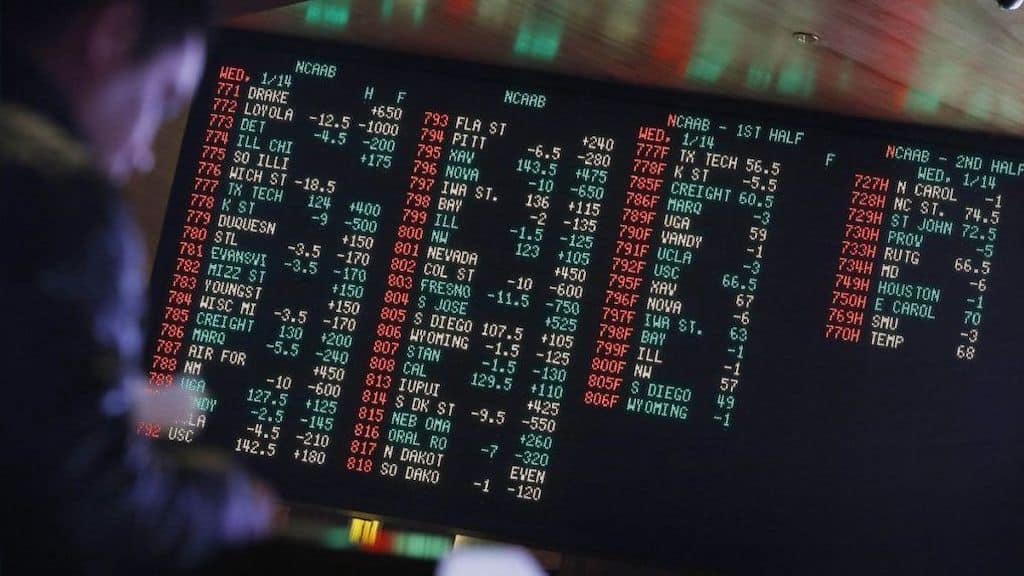Line shopping is important in sports betting.
Whether you’re an experienced “sharp” bettor or just someone who bets recreationally on the weekends during the football season, it’s important to have accounts with multiple sportsbooks.
You don’t necessarily need to always have funds in every account, but the ability to place wagers with different books is crucial for maximizing profit. Sportsbooks often have different odds for select bets and can even have different lines and totals for spreads and over/under bets.
Line shopping, a strategy that involves seeking out ideal bets with the most favorable odds, is no different than seeking out gas stations with lower prices or scouring grocery store fliers for the best prices on produce. Finding the best prices to maximize value in bets is crucial if you want to have long-term sports betting success.
What is Line Shopping?
Line shopping, simply put, is looking for the best deal on the sports betting market. Sportsbooks set their lines for select outcomes based on a variety of factors. These include a team’s recent performances, weather, injuries, home/away, etc. The volume of bets a sportsbook takes can also impact the line. it’s the same as shopping for anything. You want to compare odds to get the best price.
For example, a sportsbook may adjust the odds for Team A to win from -110 to -115 or -120 if it is receiving substantially more action on that team than Team B. This is done to draw action on Team B and balance the bets. However, that may not be the case with another sportsbook, which means one book might have Team A at -110 and another could have them at -115.
If you planned on betting on Team A regardless, you would get better value betting on them with the first book at -110. Think about it. What makes more sense, betting $110 to win $100 or betting $115 to win $100?
Why Comparing Betting Lines is Important for Sports Bettors
Let’s break down the math as to why it’s important to shop for the best lines when placing bets. You would need to stake $110 to win $100 with the theoretical sportsbook mentioned above. It would take a $115 bet to win $100 with a -115 line. That’s a difference of $50 through 10 correct bets.
Here’s a look at the differences in profit for common lines, assuming a $100 bet:
- -115: $87
- -110: $90.90
- -105: $95.20
- +100: $100
- +105: $105
- +110: $110
- +115: $115
While you’re unlikely to find huge variations in lines (i.e. +110 to -100), it’s not uncommon to find five-point differences with various sportsbooks. This is why it’s so important to compare betting odds.
This is why you should look at a game first and decide what bets you think are worthwhile before checking the lines. Once you’ve decided on what you think is a good bet, you can scour the market to see which book is offering the best lines.
Spread and Totals at Different Sportsbooks
Line shopping isn’t just about finding the best odds to maximize potential profit. Again, sportsbooks operate independently and establish their own lines and odds based on several factors. This means that some may even have a different number for the spread or Over/Under.
Let’s say you like the Detroit Lions to beat the Atlanta Falcons by a field goal, but you’re not sure about anything more than that. Sportsbook A might have the Lions favored at -3.5, but your research suggests that’s not a good value bet. Sportsbook B, however, might list the Lions at -2.5, which falls right in line with your thinking that they’ll win by three points. One point might seem like a small margin, but it can make plenty of difference.
The same is true for the total. For instance, you might be favoring the Over for an NBA game. Assuming the odds are the same, you’re better off betting the Over with Sportsbook A (221.5) than you are with Sportsbook B (222.5). If you place your bet at Sportsbook B and the final score is 112-110, you lose. It’s a win at Sportsbook A, however.
Long-Term Implications of Line Shopping
It might sound like a waste of time checking multiple sportsbooks in the hopes that you can win an extra couple of dollars on a single bet, but the difference is noticeable over an extended period of time.
Imagine a scenario in which a bettor has a 60 percent win rate over the course of 100 bets, each of which involves a $100 wager.
If each of those bets were at -115, the bettor would receive a $1,100 profit over the time. Meanwhile, if they did the necessary line shopping and were able to place all of those bets at -110, they would profit $1,400. That’s $300 in just 60 bets.
A 60-percent win rate is tough to maintain. Generally, bettors need to beat the books between 52 and 53 percent of the time just to break even (assuming odds of -110). By line shopping, bettors can still break even by winning fewer games.
For example, someone who wagers $110 on a -110 line 250 times would need to win 131 bets to break even, whereas a bettor who wagers $105 on a -105 line 250 times would only need to win 128 bets to break even.
What You Can Learn About Sports Betting
Line shopping is not just a great strategy for maximizing your potential profits. It’s also a good way to learn about the sports betting marketplace and how lines are impacted by certain factors. The more you shop around for more preferable lines, the better understanding you’ll have of sports betting as a whole.
Once you understand the value of line shopping, you can use this strategy for props and futures bets.
It’s not usually hard to find variation in long-term futures lines among sportsbooks. Bettors will find the Super Bowl or World Series winner before the start of the season at different prices at different sportsbooks. It’s the same for player props.





